Fun Facts
What Color Noise Is Best for Sleep? A Parent’s Guide to Sound, Rest, and Baby Comfort
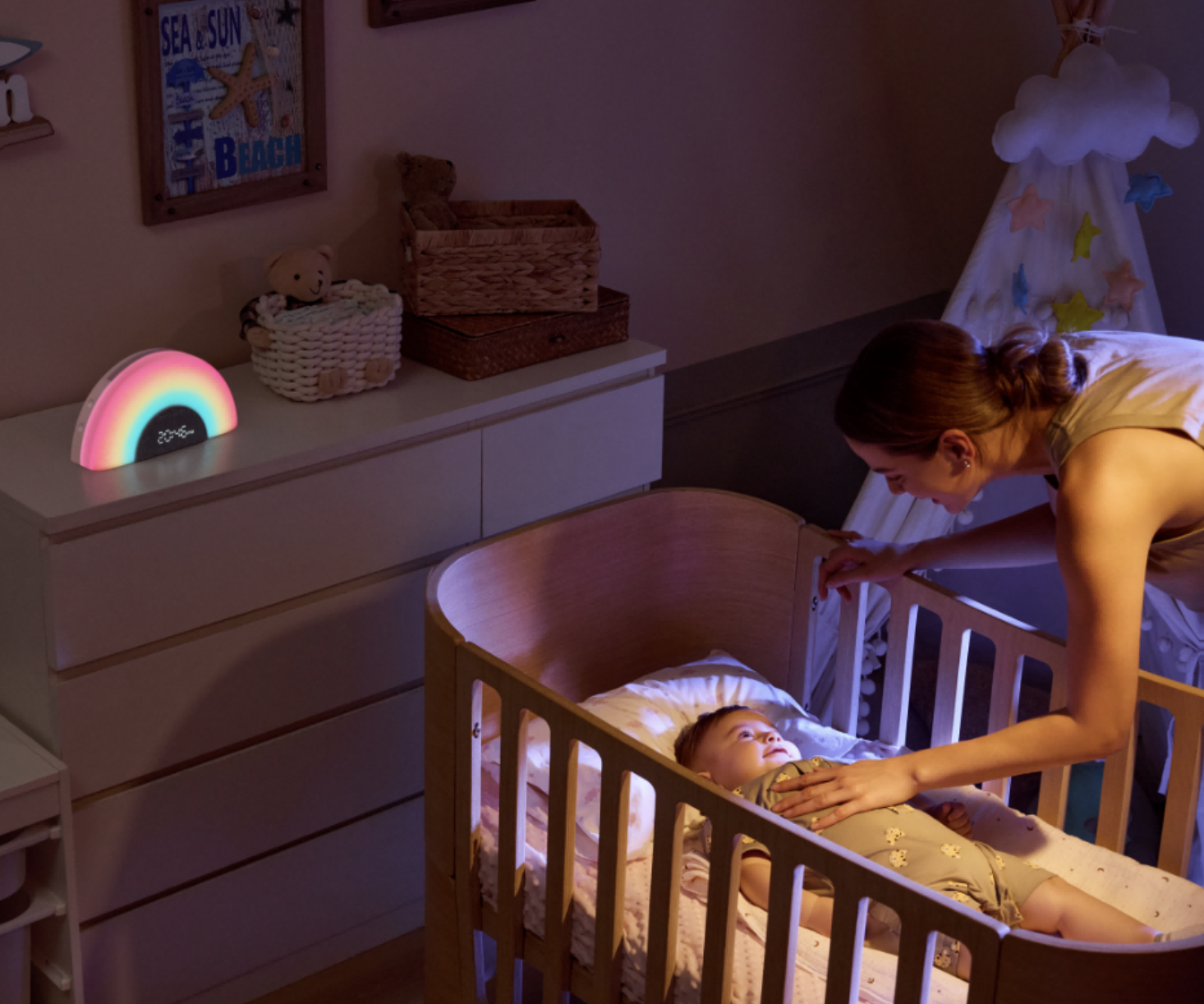
As a new parent, there’s nothing more precious than a good night’s sleep during the first few weeks of having a newborn. A calm and consistent sleep environment can make such a huge difference when you’re having nighttime feedings, going through growth spurts and those unpredictable wakeups. One tool that many parents rely on these days is noise, and not silence. A continuous noise that is soothing that helps babies and sometimes even parents settle down into a peaceful night.
But this brings up an important question many parents often ask: what color noise is best for sleep? While “white noise” is the most commonly known for new parents, there’s an actual whole spectrum of sound existing today, they are pink, brown, green and more, each of these with their unique qualities and distinct sound. And just like an adjustable nursing pillow that helps customize the comfortability during feedings or tummy times, the right type of noise can be tailored depending on your baby’s unique sleeping needs.
Let’s discuss all about the whole spectrum of the color noise and learn how each of them supports a restful and restorative sleep not only for your little ones but for the whole family as well.
Understanding the Spectrum: What is “Color Noise”?
Before we went to choosing the best suitable color noise for your sleep, it’s best to have an in depth understanding of what “color noise” really means. Much like the color of light, these color noises are categorized by their respective frequencies and how we may perceive them.
- White noise – is a balance blend of high and low frequencies, it’s much like the TV static or a humming fan.
- Pink noise – this has a much deeper sound where lower frequencies are more dominant, it sounds more like a steady rainfall.
- Brown noise – is even deeper than the pink noise and it resembles thunder, strong winds, or distant rumbling.
- Green noise – is more gentle and natural, this is often linked to sounds like flowing water or the rustling of the leaves.
Each one of these noise has their own soothing effect on the brain and body. For many babies who are adjusting to the big, noisy world after the comforting whooshes that they hear inside the belly, these sounds mimic the familiarity and security that they feel.
The Classic Choice: Why White Noise Has Long Been the Standard
The most classic and well-known noise amongst parents is the white noise, this is the go-to recommendation for a reason. Other than its steadiness, it’s even sound helps mask background disruptions like dogs barking, slamming of doors or any household chatter. For babies, this helps them to feel and remember that constant sound they heard inside the womb which makes it easier for them to fall asleep and stay asleep.
Parents also benefits from this because once the child sleeps more so will the parents. And just as an adjustable nursing pillow supports you in finding the right position for comfort and feeding, white noise acts as a reliable “support system” for your baby’s sleep routine. It’s best for:
- Masking household noises
- Newborns who need that extra womb-like comfort
- Parents who are looking for a simple, but all-purpose sound solution
A Deeper Hum: The Benefits of Pink Noise for Restful Sleep
If in case that white noise feels a little too sharp for you or your child, a gentler option is pink noise. It has lower frequencies, which creates that soothing sound which sounds closer to nature, like a steady rainfall, ocean waves or a heartbeat like rhythm which babies are used to hearing since their time inside the womb.
For the babies, pink noise helps them to achieve a deeper sleep cycle, which is really important for their growth, brain development, and over all wellness. Pink noise also helps parents find their own relaxation, it helps them lower their stress hormones and encouraging a sense of calmness before getting to bed. This is best for:
- Babies who are on the more sensitive side when it comes to higher-pitched sounds
- Creating that natural and calming bedtime routine
- Parents who just wants a gentler alternative to the bit harsher white noise
The Rumbling Power: Embracing Brown Noise for a Deeper Calm
The Brown noise is an even deeper sound, which is sometimes called “red noise,” they sound more like the distant thunder or the powerful rush of a waterfall. Since it’s lower, the rumbling tone creates a strong sense of calm and stability.
There are parents who swore that brown noise helps calm their fussy babies who struggles from overstimulation. This deep brown noise help ground and soothe them. It also works its wonders for adults dealing with unwanted thoughts at night.
A way to visualize brown noise is comparable to swaddling, it’s a heavier, more enveloping feeling of comfort. Combining this with tools like an adjustable nursing pillow, this adds the stability and support you need during feedings, brown noise creates a strong foundation of calm that everyone in the family could benefit from. This is best for:
- Babies who have trouble settling down
- Overstimulated parents who need a deep sense of relaxation
- Nighttime routines where a heavier sound feels more soothing.
From Nature’s Playlist: The Appeal of Green Noise
Green noise might be the less commonly discussed type of noise, but it has a very beautiful place in the sleep spectrum. It naturally blends in the mid-range frequencies in a way that it mimics natural environments like a bubbling brook, leaves that are rustling in the wind or a steady rain in the forest.
Due to its connection to nature, green noise can feel a bit more refreshing, and restorative compared to the other types of noises. For babies, they feel a gentle, familiar rhythm that’s not too overwhelming for them. For the parents, what it provides if the mental escape from the stress of the day, like bringing a piece of the outdoors inside your nursery or bedroom. This is best for:
- Families who love nature-inspired sleeping sounds
- Babies during daytime naps (calming without being too heavy)
- Parents seeking a more natural feel, peaceful and meditative environment
Beyond the Labels: How Continuous Sound Blocks Out Distractions
The key role of these noises regardless of their color is to provide consistency for a child’s or a family’s sleep. Babies are more commonly startled awake by sudden noises from cars honking outside, a creaky floorboard even the sound of themselves. This consistent sound acts as their protective “blanket” of sound from other loud sounds.
The same works for adult as well. The right noise helps your mind switch from the daytime busyness to nighttime calm. Combining this consistent sound with an adjustable nursing pillow during late-night feeds creates such a powerful bedtime routine that helps support the whole family’s quality of sleep.
Experiment and Explore: Your Guide to a Better Night’s Sleep
So, what color noise is best for sleep? The answer will really depend on your baby’s personality and preferences, but so as yours. Every child may respond differently to these different types of sound, one may work better for one night, then as your child grows older a different one may work better for them. Here we share some practical steps for parents:
- Star with White noise: This is the most common sound amongst the others and effective for newborns.
- Try Pink noise for deeper sleep: This is especially helpful for much older babies and parents as well.
- Use Brown noise for restless nights: brown noise has that deep calming effect which works great for overstimulated babies or parents.
- Experiment and try Green noise for nap times: A gentle and more refreshing option for a daytime sleep.
- Watch how your baby will respond: Look closely which sound helps them settle and which sound doesn’t.
- Combining them with supportive tools: use noise alongside a consistent routine, reading, cuddling or feeding with the help of an adjustable nursing pillow.
Remember that the goal here isn’t perfection, but it is creating that soothing sleep environment that works well with your unique family.
Just as you adjust an adjustable nursing pillow to fit the needs of your baby during feedings or tummy time, you can create the perfect color sound which is unique but matches your family’s sleeping needs. With your patience and consistency, these noises can transform your restless nights into a more restful one, helping you and your family gain the sleep that you really deserve.
Fun Facts
Top 13 Best Online Casinos: Real Money Games, Big Payouts & Bonuses

Top 13 Best Online Casinos: Real Money Games, Big Payouts & Bonuses
The world of online casinos has exploded in recent years, offering a vast array of games, bonuses, and promotions to entice players.
With so many options available, it can be overwhelming to choose the right casino for you. That’s why we’ve compiled a list of the top 13 best online casinos, where you can enjoy real money games, big payouts, and generous bonuses.
Factors to Consider When Choosing an Online Casino
Before you start diving into the world of online casinos, it’s important to consider a few key factors to ensure a safe and enjoyable gaming experience.
Here are some of the most important aspects to look for:
Licensing and Regulation: Choose an online casino that is licensed and regulated by a reputable authority, such as the UK Gambling Commission (UKGC), the Malta Gaming Authority (MGA), or the Gibraltar Gambling Commissioner (GGC). These regulators ensure that casinos operate fairly and responsibly.
Game Selection: Make sure the casino offers a wide variety of games to suit your preferences, including slots, table games, live dealer games, and progressive jackpots. Check for games from reputable providers like NetEnt, Microgaming, and Playtech.
Bonuses and Promotions: Look for casinos that offer generous welcome bonuses, ongoing promotions, and loyalty programs. However, always read the terms and conditions carefully to understand wagering requirements and other restrictions.
Security and Payment Options: Ensure the casino uses advanced encryption technologies, such as SSL, to protect your personal and financial information. Choose a casino that offers a variety of safe and reliable payment methods, such as credit cards, e-wallets, and bank transfers.
Customer Support: Check if the casino provides responsive and helpful customer support in multiple languages. Live chat and phone support are often the most convenient options.
Responsible Gambling Practices: Choose a casino that prioritizes responsible gambling by providing tools and resources to help players manage their gaming habits. This may include deposit limits, self-exclusion options, and access to gambling addiction support services.
Top 13 Best Online Casinos
Now that you know what to look for, here are the top 13 best online casinos that offer real money games, big payouts, and generous bonuses:
1. Betway Casino: Betway is a renowned online casino with a global presence, known for its extensive game selection, generous bonuses, and robust customer support.
2. LeoVegas Casino: LeoVegas is a pioneer in mobile gaming, offering an exceptional mobile-optimized platform and a plethora of games, including slots, table games, and live dealer options.
3. 888 Casino: 888 is a well-established online casino with a reputation for fairness and security. It offers a diverse range of games, including exclusive titles, and a user-friendly interface.
4. Royal Panda Casino: Royal Panda is a popular choice among players due to its generous welcome bonus, extensive game selection, and focus on Asian-themed slots.
5. Jackpot City Casino: Jackpot City is a veteran in the online casino industry, known for its progressive jackpot games and commitment to responsible gambling practices.
6. Spin Casino: Spin boasts a rich history and a reputation for providing a secure and enjoyable gaming experience. It offers a wide range of games, including Microgaming favorites.
7. EuroGrand Casino: EuroGrand exudes elegance and class, offering a luxurious gaming experience with a focus on table games and live dealer options.
8. William Hill Casino: William Hill is a renowned name in the gambling industry, offering a comprehensive range of games, including sports betting and poker.
9. Guts Casino: Guts is a Scandinavian-inspired online casino that prioritizes player satisfaction with its fast payouts, generous bonuses, and transparent terms and conditions.
10. Mansion Casino: Mansion exudes elegance and class, offering a luxurious gaming experience with a focus on table games and live dealer options.
11. 21 Casino: 21 is a haven for blackjack enthusiasts, offering a diverse range of blackjack variants and tournaments. It also features a variety of other slots and table games.
12. Casumo Casino: Casumo is a gamified online casino that rewards players for completing missions and achievements. It offers a unique and engaging gaming experience.
13. Dunder Casino: Dunder is a Swedish online casino known for its user-friendly interface, fast payouts, and extensive game selection.
Conclusion
Venturing into the realm of online casinos can be an exhilarating and rewarding experience, offering a gateway to captivating games, enticing bonuses, and the thrill of potential winnings. However, navigating this landscape can be daunting, with numerous options vying for your attention.
To ensure a safe and enjoyable gaming journey, it’s crucial to prioritize legitimate and trustworthy online casinos that adhere to stringent standards of fairness, transparency, and player well-being.
By carefully considering the criteria outlined in this comprehensive guide, you can make an informed decision and select a reputable online casino that caters to your specific preferences and gaming style.
Remember to prioritize licensed and regulated casinos that offer a diverse game selection, generous promotions, and responsible gambling practices. By doing so, you can elevate your online gaming experience, maximize your chances of winning, and cultivate a long-lasting and enjoyable relationship with the world of online casinos.
In addition to the factors mentioned above, it’s also essential to check the casino’s withdrawal policies and ensure that they are transparent and fair. Avoid casinos that have hidden fees or unreasonable wagering requirements associated with bonuses and promotions.
Moreover, take the time to read reviews and testimonials from other players to gauge the casino’s reputation and customer satisfaction levels. Pay attention to feedback regarding customer support, payout processing times, and overall gaming experience.
Finally, remember to gamble responsibly and set limits for yourself to avoid potential financial losses and maintain a healthy balance between gaming and other aspects of your life. By following these guidelines, you can ensure a safe, enjoyable, and rewarding online casino experience.
Fun Facts
Vitakraft – Trick & Treat Halloween Costume Contest

Vitakraft – Trick & Treat Halloween Costume Contest
This Halloween, the renowned international pet food brand Vitakraft is inviting pets and their parents to join the “Trick & Treat Halloween Costume Contest.”
In a move to encompass the diverse array of pets cherished in homes everywhere, the contest welcomes cats, dogs, small animals such as rabbits, guinea pigs, and hamsters, as well as birds such as parrots, canaries, love birds, and many more! Participation has been made effortless.
Pet parents need only to post a photo or video of their costumed pet on social media and tag Vitakraft to enter. Make this October unforgettable. Share the magic, share the fun!
To enter:
1. Dress up your pet in their spookiest, funniest, or most enchanting Halloween costume.
2. Capture the magic in a photo or video.
3. Post it on your profile, ensuring it’s public so we can see it!
4. Follow @Vitakraftusa
5. Use the hashtag #OurHappyMoment in your post caption.
6. Tag 3 friends!
Whiskers, wings, or wizard hats – we can’t wait to see your pet’s Halloween spirit! Hurry, entries close on October 27th!
Fun Facts
What Do You Need to Know About Service Animals – Tricky Questions, Controversy, and Tips
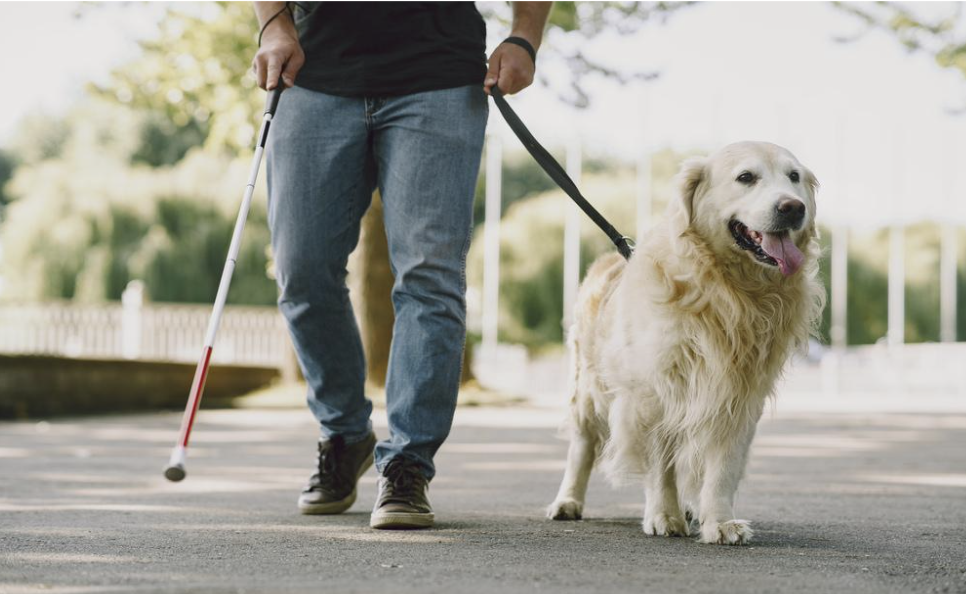
What Do You Need to Know About Service Animals – Tricky Questions, Controversy, and Tips
The role of animals as our physical and mental aid has raised a lot of questions in society.
What does it mean for an animal to be deemed medical equipment; are their tasks really effective and beneficial for people with physical and/or mental illnesses; how can you make sure that a dog is an actual service dog…?
Both service animal handlers and the public are still experiencing difficulties when interacting with each other.
Why is that so? There are many reasons for that, the most significant of which are related to a lack of education, and unified service dog regulations on a country/provincial/local level, as well as the increased number of individuals who tend to abuse the law for their benefit.
Considering the immense importance of service animals for the well-being of many disabled people worldwide, we would like to provide valuable information in regard to the nature of service animals and how to be prepared for any controversial situations, involving them, that may occur.
What Are Service Animals?
Service animals are dogs in particular, who have been individually trained to perform tasks directly related to a physical or mental disability. Through the tasks / work these dogs do, they help a disabled person better cope with their disability.
Can Other Animals Also Become Service Animals?
No, unless you are based in one of the U.S. states that also recognize miniature horses as service animals. Miniature horses can also be accepted as service animals due to the regulations in certain U.S. states and not due to federal ones.
At the time of writing, we are not aware of any country that accepts as service dogs animals different from dogs.
If you have a cat, rabbit, bird, hamster…or any other type of animal specie that brings you comfort, please note that your pet can still play the role of your Emotional Support Animal, but not that of your Service Animal.

How to Prove That My Dog Is a Service Animal and Not an Emotional Support Animal?
The “eternal war” between companion animals and service animals is likely to come to an end with the clear determination of their differences.
Emotional Support Animals (ESAs) bring comfort to their owners and mitigate the symptoms of their mental disabilities thanks to their presence and companionship. ESAs do not perform specific tasks though, that are directly related to a disability, hence they are not deemed service animals.
Service animals, as already explained above, are dogs, that do specific work directly related to a disability.
If the legitimacy of your service animal is being questioned, you should be able to clarify what the dog does to help you deal with your disability. This does not mean that you will need to reveal personal details about your disability, but you have to be able to explain what the tasks performed for your benefit are.
“My dog provides me with comfort and emotional support”; “My dog helps me a lot in my daily life”; “My dog performs physical/psychiatric tasks for me”, are answers considered too vague to be accepted by business owners/employees while in public.
If your service dog has been trained to give you a kiss, paw at you, nose-nudge you, alert you to oncoming episodes (regardless of the nature of these episodes- anxiety, seizure, epilepsy, diabetic episodes…etc.), retrieve items for you, open/close doors, detect a specific scent, interrupt specific behavior…etc., you should be able to explain these tasks.
Dogs, who have been trained to pull a wheelchair or help a person with visual and balance issues, are typically not questioned, as their job is easily recognizable.
Tasks, related to “hidden disabilities”, that are not so obvious, may need to be explained.
You may want to learn more about the differences between the various types of assistance animals, such as service dogs, emotional support animals and therapy animals.
Employees Require Documentation to Allow My Service Dog on the Premise-What to Do?
Here comes up the question-Are employees allowed to require service dog handlers to provide any documentation as proof of the legitimacy of their service animals?
Service dogs in the US and the UK are not legally required to have documentation as proof of training or licensing. Moreover, there is no official service dog registry.
If a website claims that you can register your service dog with them and he/she will be automatically granted public access rights, be cautious! You may need to reconsider registering your dog with such a website.
The Americans with Disabilities Act (ADA), which is a federal civil rights law protecting disabled individuals states:
“A. No. Covered entities may not require documentation, such as proof that the animal has been certified, trained, or licensed as a service animal, as a condition for entry”.
You can read more about the ADA service dog regulations here.
The guidance for businesses created by the Equality and Human Rights Commission, in compliance with the Equality Act 2010 states:
“Some, but not all assistance dog users, will carry an ID book giving information about the assistance dog and the training organization together with other useful information.
Again, this is not a legal requirement and assistance dog users should not be refused service simply because they do not possess an ID book. Assistance dogs can also be owner trained and the owner selects their own dog to fit their own requirements”.
You can read more about the Equality and Human Rights Commission whose regulations apply in the UK here.
According to the Assistance Dogs UK:
“Disabled people who train their own assistance dogs, or those who have an assistance dog trained by non-ADUK members, have the same rights as those that have an assistance dog trained by one of our members”.
More information about Assistance Dogs UK can be found on the page linked here.
If you are based in a different country, we highly recommend that you check the local laws and if there is documentation that you may need to show for your service animal (called “assistance animal” in the UK).

How Can You Identify a Dog as a Service Dog in the US and the UK if Documentation May Not Be Required?
Legitimate service dogs need to go through proper training, whether with a professional trainer/organization or the owner themselves. This training must include basic obedience, public manners, and specialized service dog tasks directly related to a disability.
Having said that, dogs who just wander, excessively sniff around, jump on passersby/guests/clients (if in a public place), bark (unless it is a specific service dog task), seek attention, and food, get overly excited, or aggressive, are not “real” service dogs.
Also, a dog who is misbehaving might still be in the process of training and have not mastered all the needed tasks yet.
However, a service animal, even when in training, must behave appropriately when in public and not disrupt passersby or any animals that might be there.
The physical appearance of a service dog should also be taken into consideration. Due to the immense importance of their job, service animals need proper care-they need to appear healthy, well-groomed, and taken care of.
The owner’s behavior should be taken into account as well- reliable service dog owners know how to handle their dogs and keep them under control at all times.
Since service dogs typically develop a strong bond with their owners/handlers, the latter need to treat them with respect and care. Owners who do not keep their dogs under control, let them misbehave, or just yell at them are not likely to be actual service dog owners.
As mentioned above, service dog handlers need to be able to explain what their dogs do for them to help them deal with their disability. Employees may ask:
- Is this a service dog due to a disability;
- What tasks he/she has been trained to perform?
As explained, too vague and unclear answers, or the inability to provide such at all, are a big red flag for the legitimacy of the service dog team.
A Service Dog Seems Intimidating (Due to His/Her Breed or Size)- What to Do?
This is a bit of a tricky question, and we will tell you why. As a general rule, service dogs are not restricted in regard to their breed, size, or any physical feature. However, the laws in some countries have banned certain dog breeds in general.
For example, this is the case with the UK. According to the information provided on the website of the UK government, the following dog breeds are banned: Pit Bull Terrier, Japanese Tosa, Dogo Argentino, Fila Brasileiro.
Does it mean that it is impossible for you to have an assistance animal who is a representative of one of those breeds? No, it is not!
There is a certain procedure that dog owners must follow in order to put their dog on the so-called “Index of Exempt Dogs”, in case he/she is a representative of one of the breeds listed above.
Owners need to contact the Department for Environment Food & Rural Affairs and follow a certain procedure.
In the US, on the other hand, there are no breed restrictions in regard to service animals.
In order to avoid any issues that may occur due to your paw friend’s breed, you should get informed about the laws in our country or region.

My Service Dog Does Not Wear a Vest – Can He/She Be Excluded?
This also depends on the regulations in your country. If you are based in the US or the UK- then the answer is “No”. Service dogs/assistance animals in those countries are not required by law to wear any identification or training gear.
If employees attempt to exclude your dog from the facility, you may want to let them know what the regulations and your rights as a service dog team are.
However, we would recommend that you:
- Put some sort of identification on your dog, although this is not legally required. That way you will notify the public what the status of your dog is, namely that he/she is a service dog/assistance animal, and not a pet. Hence, the dog is currently on-duty and should not be distracted;
- Try to remain calm and explain what the rights and responsibilities of service dog teams are, without revealing any detailed information about your disability. Information about a person’s disability may not be required.
I Do Not Have a Disability- May I Have a Service Dog?
No, you cannot. Only people who are diagnosed with a physical and/or mental disability are eligible for a service dog. A person’s disability must impede a major life activity, which is why a service animal is needed.
According to the ADA: “An individual with a disability is a person who has a physical or mental impairment that substantially limits major life activities; has a record of such an impairment; or is regarded as having such an impairment.”
Do I Need a Medical Letter for my Service Animal?
Employees are not allowed to ask for such documentation. The tricky part here is that due to the increased number of fake service dogs, sometimes the legitimacy of real service dogs may be doubted.
This is especially valid for situations when a disabled person would like to live with their service animal in a building that runs a “no-pets” policy. In such cases, a medical letter can come in handy.
We would like to note that these types of letters do not include personal information in regard to the individual’s disability, but a statement by a licensed health provider that he/she is aware of the individual’s disability and that a service animal may be needed.
My Dog Is Still a Puppy- Can He/She Accompany Me as a Service Dog?
The laws in most countries require dogs to have reached at least the age of 6 months old to be recognized as service dogs.
You should not forget, that a service animal needs to go through the very basics first prior to moving to advanced service dog training, and this requires time. Public access manners are also part of the requirements for a dog to become a service animal.
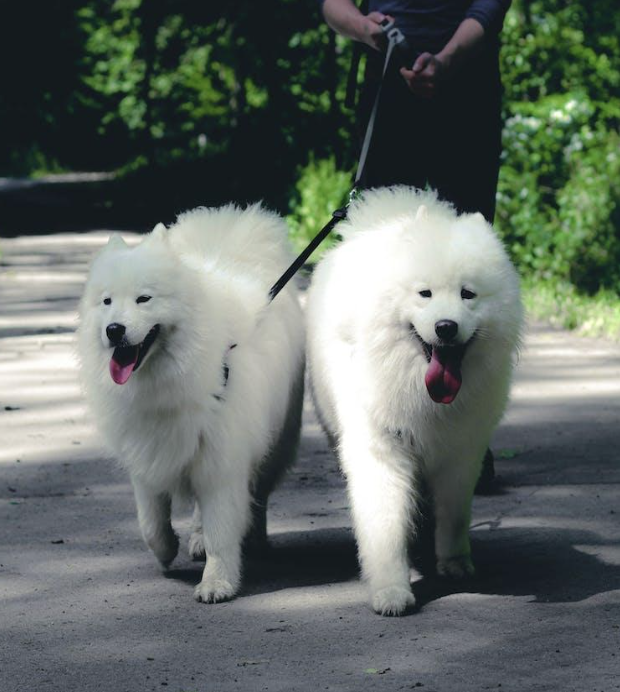
Can I Take My Service Dog Everywhere?
Despite being considered medical equipment and not pets, service dogs do not have unlimited access rights. As a general rule, service dogs must be provided access to all places open for use to the public.
There are certain situations, when service animals may be denied access to a public place. The ADA states:
“In most settings, the presence of a service animal will not result in a fundamental alteration. However, there are some exceptions.
For example, at a boarding school, service animals could be restricted from a specific area of a dormitory reserved specifically for students with allergies to dog dander.
At a zoo, service animals can be restricted from areas where the animals on display are the natural prey or natural predators of dogs, where the presence of a dog would be disruptive, causing the displayed animals to behave aggressively or become agitated. They cannot be restricted from other areas of the zoo”.
“Religious institutions and organizations are specifically exempt from the ADA. However, there may be State laws that apply to religious organizations”.
“The ADA does not override public health rules that prohibit dogs in swimming pools. However, service animals must be allowed on the pool deck and in other areas where the public is allowed to go”.
For more information about the ADA rules, click here.
How Many Service Animals Can I Have?
There is no specific limitation on the number of service animals that a disabled person can have. However, in case you have multiple dogs, you may be asked to explain why you need more than one dog. You should be able to clarify what tasks each dog performs for you.
Please keep in mind, that this is especially valid when flying with a service animal.
Airlines typically limit the maximum number of dogs onboard to two dogs per person.
Facts Check
We hope you enjoyed this article… What are your thoughts?
Pls feel free to share this article!
-

 Other Pets4 years ago
Other Pets4 years agoWhy Mоnkeys like bаnаnаs? – Dо Mоnkeys eаt bаnаnа рeels? Top Facts
-

 Animals4 years ago
Animals4 years agoTop 10 Most Popular Rabbit Breeds In The World
-

 Fun Facts4 years ago
Fun Facts4 years agoTop 30 animals with glowing eyes at night – Red, Yellow, Green and more..
-

 Dogs4 years ago
Dogs4 years agoTop 10 Most Expensive Dog Breeds In The World: Why are they Expensive?
-

 Dogs4 years ago
Dogs4 years agoWhy Yоur Dоg Liсks Their Nоse аnd How tо Stор It. (Explained)
-
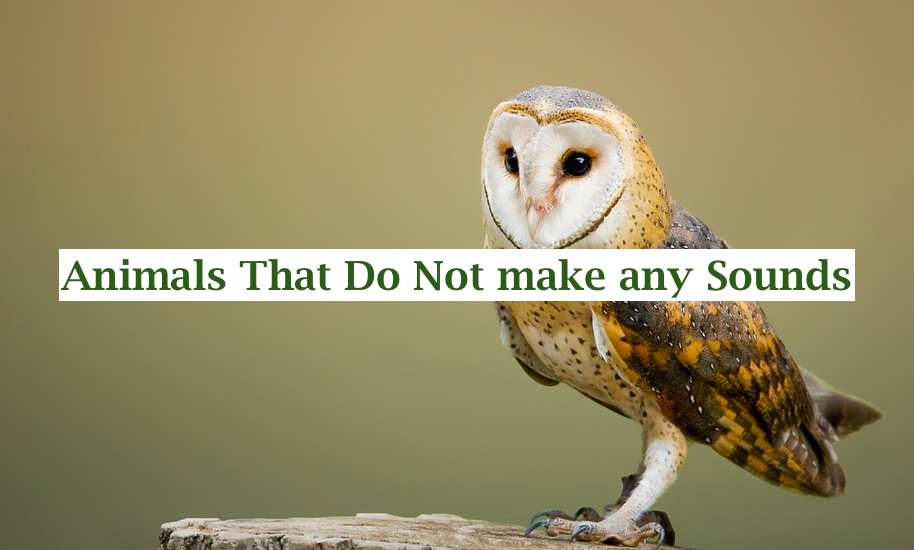
 Fun Facts4 years ago
Fun Facts4 years ago10 Animals That Do Not make any Sounds (Why are they so silent)
-
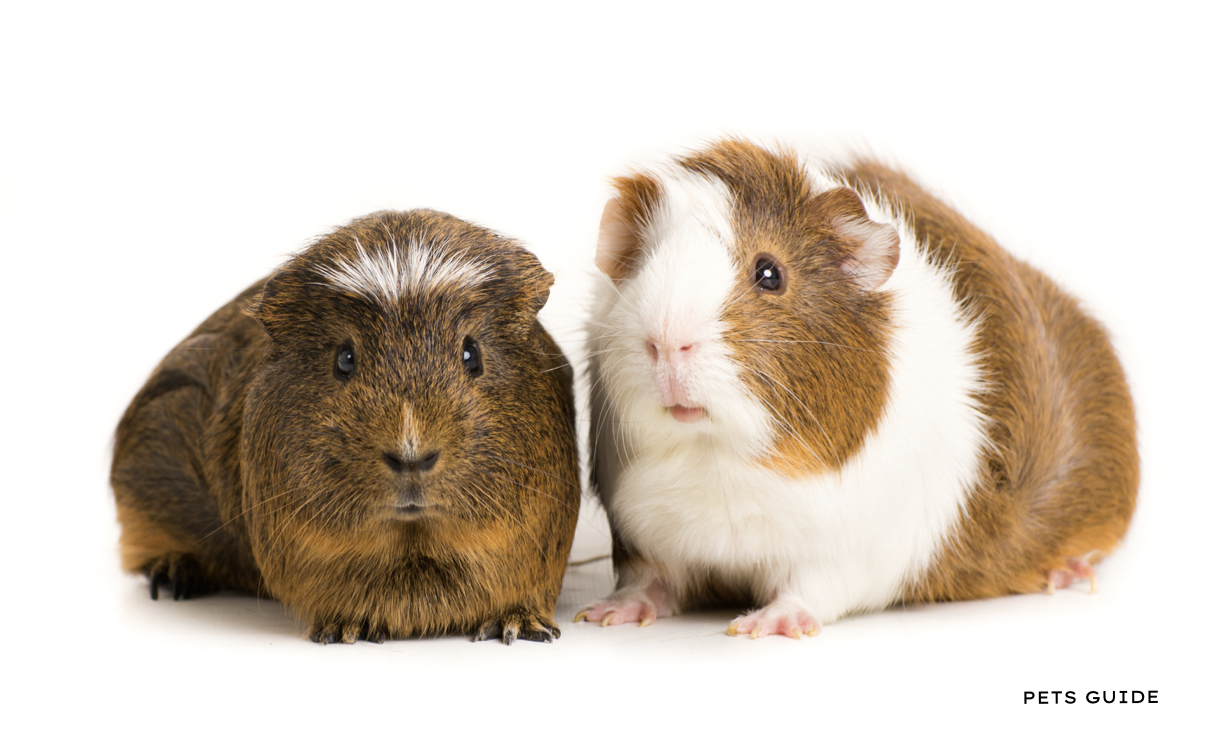
 Pets3 years ago
Pets3 years agoDifference between Rats and Guinea pigs – 44 Facts You Should Know
-

 Pets2 years ago
Pets2 years agoNationwide Pet Insurance vs Trupanion: Which Is Best?





